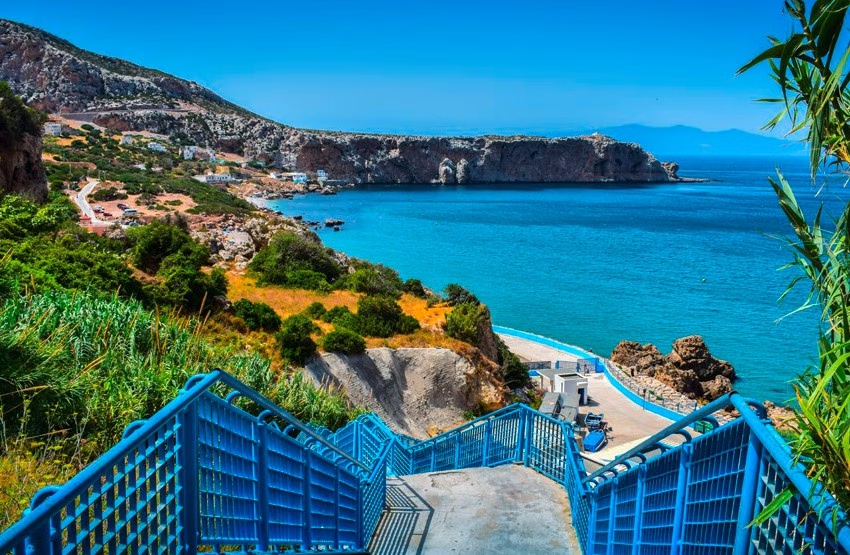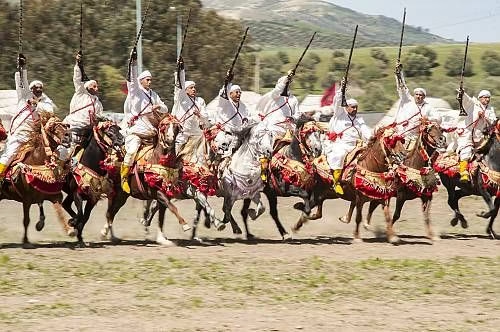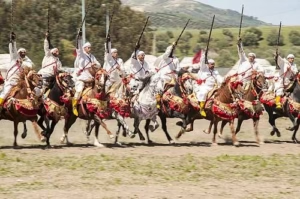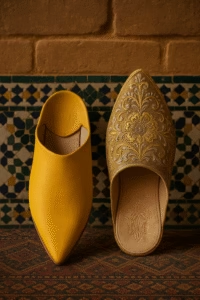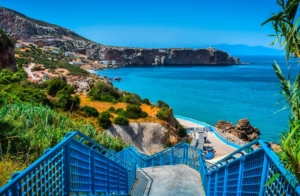Tetouan’s coastline tells a story of nature lost to politics and profit.
Fez– There was a time, not long ago, when the beaches of Tetouan weren’t just beautiful, they were a living memory of northern Morocco’s untouched coastal charm.
From Rincon to Cabo Negro, from Azla to Oued Laou, this stretch of Mediterranean paradise once offered more than sun and sand.
It was a place where nature ruled, where families found peace, and where every wave seemed to echo with nostalgia. But that story, once written in turquoise waters and golden sands, has now been buried under concrete.
In the early decades following independence, Tetouan’s coastline still bore the imprint of a Mediterranean Eden.
The dunes of Saniyat Raml shimmered with wild vegetation, known locally as “Anjoum Delbahr”: star-shaped plants that blanketed the sand like nature’s own embroidery.
The beaches weren’t just scenic, they were alive. With pine trees offering generous shade, with freshwater springs like “Sanit Al-Torres” and “Camping Cinco” bubbling through the rocks, locals would pitch their tents for months in a seamless rhythm with land and sea.
The sand itself was different; golden and textured by time, crushed shells and coral forming a natural glitter under the midday sun.
Nowhere was this more striking than in Rincon and Saniyat Al-Torres, whose shores seemed dusted with gold.
The sea was clearer, saltier, stronger. People swam not just for fun, but for health, drawn to its mineral-rich waters and pristine depths.
And yet, somehow, we let it all slip through our fingers.
One of the most ironic facts in this saga is that under Spanish colonial rule, construction along these beaches was practically forbidden.
The Franco regime, despite its authoritarian nature, respected the coast as a military and public domain: untouchable, unsellable. No resorts, no seaside housing, no private development.
The rule was simple: nothing could be built below the main coastal road linking Tetouan and Ceuta. What lay between that road and the sea was sacred, and when the Spanish left, they handed it back untouched.
But by the 1970s and 80s, a new kind of colonization arrived, one that came not with flags or armies, but with briefcases, permits, and political alliances.
Under the banners of decentralization and regional development, the door was opened to a wave of dubious building permits and backroom deals.
The coastal land, once protected by law and legacy, became a battlefield for real estate speculation.
Gone were the dunes, replaced by soulless cement. Gone were the shaded family tents, replaced by high-rise apartments.
What had been a haven of biodiversity became a grid of gated compounds. Political mediocrity met economic greed, and together they erased decades of natural heritage.
Under the pretense of “modernization,” a coalition of corrupt officials, shady developers, and complicit authorities transformed Tetouan’s shoreline into something unrecognizable.
This wasn’t progress, it was vandalism in a suit and tie.
The tragedy isn’t just environmental. It’s cultural. It’s historical. We lost not only a landscape, but a lifestyle. A way of being in the world, where nature and community coexisted.
Where a child’s summer was defined by the rhythm of waves, not traffic. Where the smell of pine mixed with sea salt, now exhaust fumes and freshly poured cement.
Today, the question hangs in the air like mist on a polluted shore: how did we let this happen? Who benefited from the loss of this public treasure? And most of all, is it too late to salvage what’s left?
Tetouan’s beaches were never just a destination. They were a memory. A mirror. A measure of how much we valued what was freely ours.
And now, as the tide pulls back, what remains is a haunting reminder that once, we had it all. And we watched it vanish.
Read also: Kohl in Moroccan Culture

